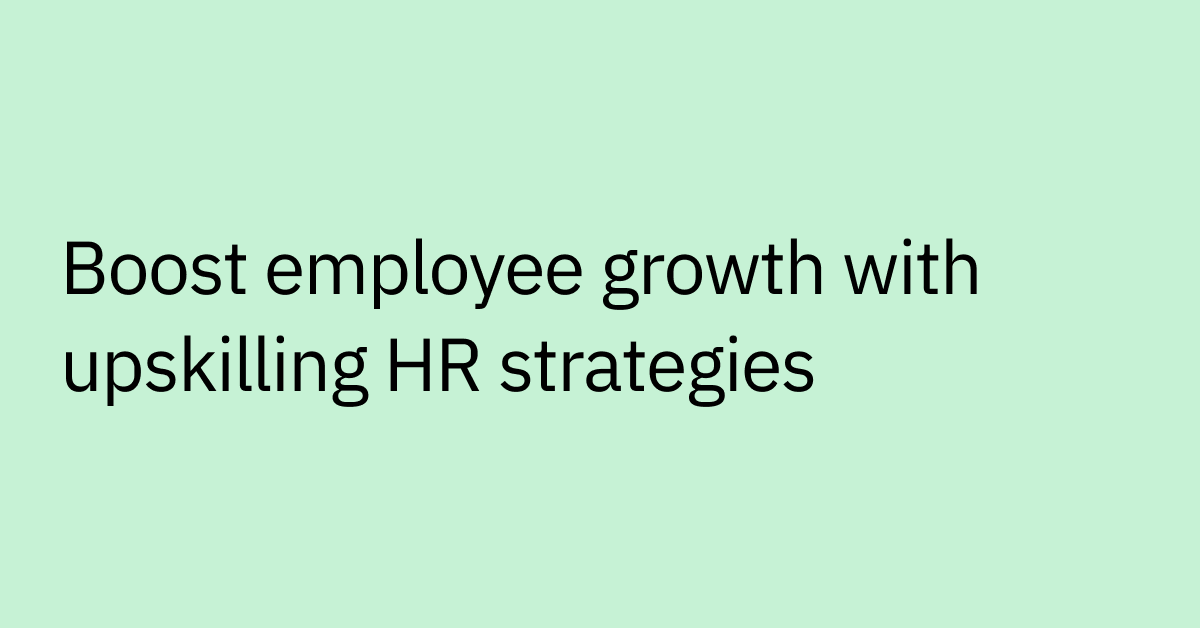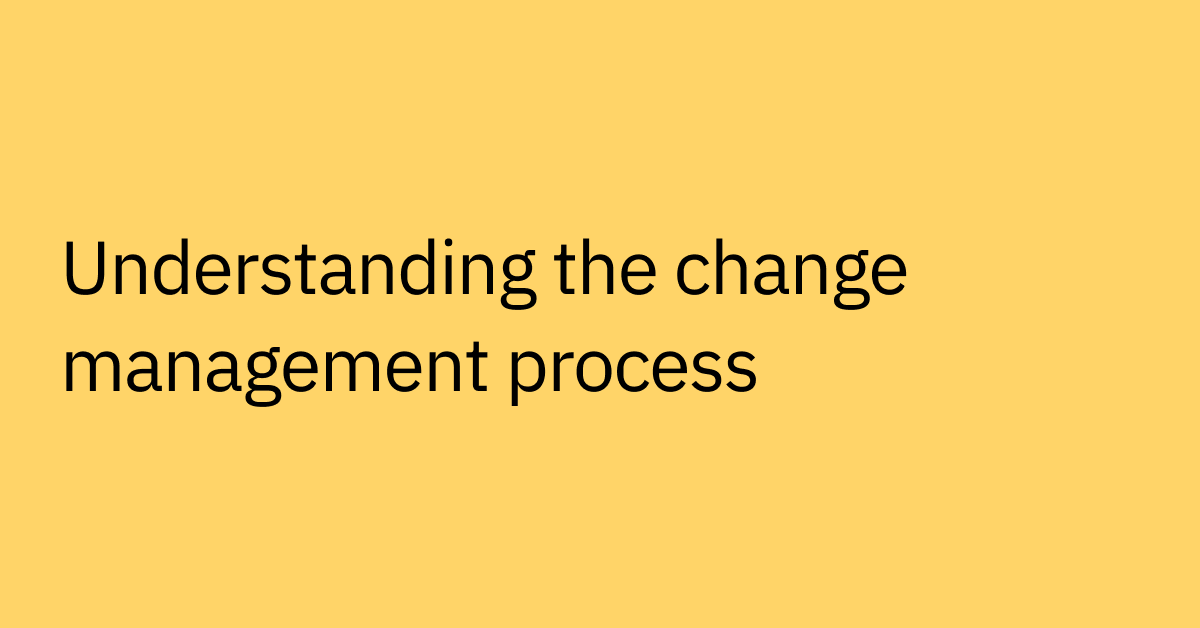Table of contents
Highlights
- Distributed SaaS teams rely on dozens of interconnected apps across IT, HR, finance, and product, and even small disruptions can stall productivity.
- AI assistants are able to act as the orchestration layer for distributed work, capable of resolving complex requests, automating multi-step workflows, and providing instant help across any channel.
- Real-world use cases show how agentic AI accelerates onboarding, resolves access issues, supports multilingual teams, and maintains continuity during outages—without adding complexity to your existing systems.
Supporting a distributed workforce is complicated. Your employees are spread across offices, time zones, and countries, yet they still rely on one another—and on you—to stay connected and productive.
For IT and operations leaders, this raises a big question: how do you equip people with the right mix of tools to collaborate, find answers, and access what they need, without running into roadblocks?
For a lot of enterprises, this means turning to AI and automation. The goal is to streamline workflows, reduce manual tasks, and ensure consistent employee experiences across tools and locations. The right setup connects people, clears friction, empowers self-service, and helps your team work seamlessly across time zones without waiting on human intervention.
And the stakes are high.
Seventy percent of employees lose up to 20 hours each week dealing with fragmented systems. That’s why picking the right tools is one of the most important decisions you’ll make for your distributed workforce.
Why distributed workforces struggle without the right tools—and how to fix it
A distributed workforce thrives on flexibility, but without the right systems, flexibility becomes friction. When the tools your team depends on don’t line up, productivity drops. In fact, 77% of distributed employees say fragmented tools limit their productivity.
Here are the most common challenges and how to solve them:
- Tool fragmentation: Your team juggles 10+ apps daily—Zoom for meetings, Jira for tasks, and Workday for HR. Switching between them wastes time and breaks focus.
Fix: Choose integrated platforms and AI assistants that connect your systems, so employees don’t have to hop between apps.
- Asynchronous collaboration: Different time zones create delays. An engineer in Tokyo might wait hours for a manager in New York to approve a request, causing delays and duplicate work.
Fix: Use Slack or Microsoft Teams with persistent, searchable threads. Pair them with AI-powered workflow automation to keep tasks moving, like auto-routing approvals when someone’s offline.
- Knowledge silos: Information gets trapped in Confluence, emails, and shared drives, making it hard to find answers quickly.
Fix: Centralize knowledge in hubs like Notion or Confluence, and add AI-powered enterprise search to deliver instant, relevant answers.
- Burnout risk: Remote employees often blur work-life boundaries, staying online longer to chase approvals or fix access issues.
Fix: Automate repetitive tasks like password resets or software provisioning. Self-service tools let employees solve problems without waiting for IT or HR after hours.
The takeaway? Productivity depends less on location and more on how seamlessly your tools connect the employee experience.
At a glance: The top distributed workforce tools
Here’s a quick look at tool categories, their key features, and when they shine:
Category | Top features | Ideal use case |
Unified communication platforms (Slack, Microsoft Teams) | Real-time messaging, video conferencing, and searchable chat history | Async collaboration across time zones |
Project and task management (Asana, Jira, Trello) | Task tracking, deadline reminders, and visual workflow dashboards | Coordinating work without endless meetings |
Enterprise search (Glean, Moveworks) | Centralized content hubs, semantic search, and AI-driven answers | Helping employees find answers |
Identity & access tools (Okta, Azure AD) | Automated provisioning, role-based access, and compliance | Providing secure and quick access to enterprise tools |
Collaboration and content-sharing tools (Google Workspace, Microsoft 365, Notion) | Real-time co-editing, version control, and file organization | Creating and sharing work across remote teams |
Workflow automation | Cross-system orchestration, approval routing, and trigger-based workflows | Reducing manual effort in IT, HR, and finance |
AI assistants (Microsoft, Moveworks) | Natural language processing (NLP) search, multilingual support, and task automation | Answering queries instantly across conversational interfaces like Slack, Microsoft Teams, and more |
Seven essential tool categories for distributed workforce productivity
In a typical SaaS company, your team relies on dozens of apps across IT, HR, sales, and engineering. If one system fails or access is delayed, work grinds to a halt. Below are seven tool categories that remove those blockers, streamline support, and help you scale without adding headcount.
1. Unified communication platforms for async and cross-functional teams
Slack, Microsoft Teams, Google Chat, and Zoom keep your team connected, whether they’re collaborating in real time or async across time zones.
But in SaaS organizations, it’s not just about quick messages. Persistent threads keep project context alive after the meeting ends, while searchable history makes it easy to resurface past decisions without digging through emails. Integrations with Jira, Salesforce, and GitHub also mean conversations stay tied to the actual work in progress.
For cross-functional groups like product, sales, and support, these communication tools give visibility, so a designer in New York and a support lead in Dublin stay aligned without losing context.
AI makes this even stronger by generating meeting summaries, surfacing action items, and automatically sending updates on key projects — keeping distributed teams aligned without adding manual overhead.
2. Project and task management tools
Distributed teams need clear visibility into priorities and deadlines without endless check-ins. Tools like Asana, Jira, Trello, Monday.com, and ClickUp help by offering:
- Dashboards that track objectives and key results (OKRs) and dependencies, so everyone knows what’s due
- Automated task creation, like generating tickets from emails or Slack messages
- Self-serve updates, so team members can check progress without pinging managers
For example, a marketing team spread across regions can use Asana to manage campaign milestones, with automated reminders ensuring nothing slips through the cracks.
AI can add another layer by sending update notifications, summarizing project statuses, and flagging at-risk deadlines before they cause delays.
3. Enterprise search
Storing information isn’t enough—it has to be easy to find and act on. Enterprise search (Glean, Moveworks, or Guru) helps make it easy to surface updated, accurate, and contextuall appropirate institutional knowledge.
This matters even more for distributed organizations:
- New hires need immediate access to accurate, updated content from day one.
- Global teammates must find accurate answers without waiting for someone online.
- Managers reduce repeated questions by making knowledge discoverable.
AI-powered enterprise search takes this further by being able to surface the most tailored and useful results for each employee. By bringing a goal-driven approach to information retrieval, AI search makes search actually helpful.
Advanced enterprise search tools like Moveworks combine agentic RAG with robust permissions and AI ranking to deliver the most tailored and useful results for each employee letting them stay productive without bottlenecks.
4. Identity and access tools for secure, seamless provisioning
In distributed environments, fast access to software like Salesforce, Workday, and Zoom is essential. Otherwise, selling slows down, onboarding stalls, and compliance issues pile up.
That’s why automated identity and access tools like Okta, Azure AD, and Ping Identity remove that friction by assigning the right permissions automatically based on roles.
Pair identity tools with an orchestration layer that can provision, revoke, and audit automatically. That way, as your workforce scales across regions and contractors, access updates happen automatically and compliance stays intact.
AI strengthens this by monitoring unusual access patterns, detecting anomalies, and triggering proactive remediation before they escalate into downtime or security incidents.
5. Collaboration and content-sharing tools
When employees can co-create and share files seamlessly, distance becomes less of a barrier. Platforms like Google Workspace, Microsoft 365, Figma, and Notion give distributed teams a shared canvas for brainstorming, drafting, and refining ideas together.
To keep collaboration smooth:
- Enable real-time co-editing so a designer in Tokyo and a product manager in Toronto can work on the same doc.
- Standardize file organization to avoid duplicates.
- Use version control to maintain accuracy.
AI enhances collaboration by suggesting edits, summarizing threads, and generating first drafts — so teams spend more time refining ideas, not starting from scratch.
6. Cross-system workflow automation
Approvals stuck in inboxes, routing errors, and lack of status visibility are daily bottlenecks that distributed teams struggle with. Systems like ServiceNow, Jira, and Workday are designed to manage tickets, onboarding, and approvals, but when each runs in isolation, processes stall, and employees are left chasing updates.
Standard automation helps, but building them can be resource intensive, and basic rules-based flows often break across applications or in dynamic, multi-team environments.
Tools like Zapier, Jira Automation, and Moveworks offer cross-system workflow automation to automate business workflows spanning multiple software systems, platforms, or departments.
Advanced automation tools like especially those powered by agentic AI, can manage complex workflows that require customization and integration across existing systems. These tools are able to adapt in real time, interpret user intent, and make context-driven decisions to simplify operations and scale automation over time.
7. AI assistants that address issues any time
AI assistants are the next evolution of distributed workforce support. They use conversational AI to provide employees with 24/7 personalized support, helping employees to spend more time on high-impact work instead of wasting time searching for information.
Unlike traditional virtual assistants, agentic AI assistants can:
- Understand user intent across languages and roles.
- Take multi-step actions in tools like Okta, Salesforce, and Workday.
- Resolve common support issues instantly.
Agentic AI elevates the assistants by returning more than information: they can also take actions on the employee’s behalf, such as filing IT tickets, putting in a request for PTO, or close deals faster with auto alerts.
Best practices for building a connected tool ecosystem
A connected ecosystem doesn’t happen by accident—it requires wise choices about tools, integrations, and how employees engage with them. To get there:
- Prioritize interoperability: Choose solutions that unify knowledge and workflows across your technology stack. Use middleware, APIs, or platforms with robust integration capabilities to connect data sources and deliver seamless digital experiences. Avoid solutions that require uprooting your entire ecosystem—focus on connecting with your current systems
- Match tools to business needs: Select tools that address specific business challenges and integrate well with existing systems. Assess scalability and total cost of ownership to ensure long-term value
- Create a complementary ecosystem: Combine multiple tools and approaches (e.g., RPA for routine tasks, AI assistants for complex workflows) so each tool serves a unique purpose. This balanced strategy helps address different needs across the organization
- Start with pilots and gather feedback: Begin with pilot programs to validate integration approaches. Collect user feedback and refine processes based on real-world usage before expanding implementation
- Organize collaboration hubs: Use enterprise collaboration platforms (like Slack or Teams) as the foundation for your digital HQ. Build seamless integrations between your collaboration hub and other digital tools, and bring all employees into the digital HQ for unified communication and workflow
- Overcome silos: Integrate employee-facing applications and ensure systems can share data effectively to prevent dead ends, broken workflows, and inconsistent information
These steps ensure your digital workplace runs smoothly and that employees get the most out of the workforce tools you’ve invested in.
Why agentic AI is essential for distributed teams
Agentic AI surpasses traditional automation by moving beyond rigid, rule-based tasks to perform complex, goal-oriented work.
Unlike traditional systems that follow a predefined script and break when faced with the unexpected, agentic AI can autonomously reason, plan, and adapt its actions in real-time to achieve a high-level objective with minimal human oversight.It can:
- Automate across tools and systems to reduce manual switching and duplicate data entry
- Flag risks and prioritize tasks for real-time decision-making
- Personalize support based on an employee’s role, location, and communication channel
- Scale knowledge sharing with natural language search
Agentic AI takes it further by acting as a teammate—understanding goals, taking autonomous action, and adapting workflows as conditions change.
Real-world use cases of agentic AI in distributed teams
When teams work across time zones and depend on dozens of SaaS tools, even small hiccups can ripple quickly.
Agentic AI provides the connecting layer that keeps work moving without waiting on human intervention. Below are several high-impact ways distributed teams use AI for employee engagement:
Eliminating onboarding delays through autonomous provisioning
In distributed companies, onboarding stalls when IT and HR are in different regions, approvals bounce between departments, or tickets get lost in queues. Agentic AI in HR fixes this by detecting a new hire in Workday, assigning the right role-based tool stack, and provisioning access instantly through Okta and other systems.
It can even troubleshoot post-provisioning snags like license conflicts or SSO loops. As a result, new employees are productive from their first login, and IT stays compliant without manual effort.
Resolving routine access issues across time zones without IT involvement
Access problems like repeated multi-factor authentication (MFA) failures, expired certificates, or locked accounts may seem minor, but they can halt work if IT isn’t online. Agentic AI assistants can monitor identity signals and automatically trigger the right remediation—unlocking accounts, regenerating certificates, or routing securely to an approver. By fixing these in the background, employees can keep working no matter the time zone.
Supporting multilingual employees with AI-powered self-service
Global teams often struggle with English-first support models. Agentic AI assistants bridge the gap with support in 100+ languages, letting employees ask questions, access policies, or complete tasks in their native language across Slack, Teams, or email.
Imagine a French-speaking employee in Montreal asking for the expense policy in Teams, reviewing the correct document, and submitting a request—all without needing to switch languages or escalate to HR. That saves costs and builds trust.
Maintaining operational continuity during outages or incidents
When a core tool goes down, distributed teams can’t afford to wait. Agentic AI solutions detect outages early, notifies employees, and provides workarounds. It might reroute approvals through Slack, grant backup access, or surface cached data to keep projects moving. Once resolved, it updates the knowledge base with the steps taken, so the playbook gets smarter over time and supports business continuity.
Creating a unified support layer across fragmented systems
In most SaaS companies, employees waste time figuring out where to go for help—HR, IT, finance, or security. Agentic AI assistants make this simple: employees ask in plain language, and the AI handles routing, permissions, and execution behind the scenes.
For instance, someone asking about a vendor invoice in Slack doesn’t need to know if it’s in Coupa or Workday—the AI fetches it, routes it, and confirms payment, saving time and frustration. This creates an omnichannel employee experience, where support is consistent no matter the entry point.
Powering distributed work at scale starts with the right AI infrastructure
If you’re leading IT, workplace, or operations, the challenge isn’t adding more tools—it’s ensuring your systems scale across time zones, channels, and departments without breaking. What you need is an AI infrastructure that runs 24/7, removes bottlenecks, and keeps employees productive no matter where they are.
Moveworks agentic AI Assistant handles requests, automates processes, and personalizes support from day one. With Moveworks, you can:
- Support 100+ languages across Slack, Teams, email, and more.
- Resolve IT, HR, and finance requests instantly, from access provisioning to expense routing.
- Orchestrate actions across 100+ enterprise systems, adapting dynamically to role, location, and permissions.
Instead of chasing tickets or waiting for manual handoffs, your teams get fast, secure resolutions on any channel, at any time.
Check out Moveworks AI Assistant to see how it can power your distributed workforce.
Frequently Asked Questions
A connected tool ecosystem for your remote workforce includes reliable collaboration tools, knowledge management systems, identity and access tools, workflow automation solutions, and AI assistants. Together, they keep projects moving, knowledge accessible, and employees supported, no matter where or when they’re working.
Traditional automation depends on rigid, scripted workflows that often break when conditions change. Agentic AI is different. It interprets intent across languages and roles, takes autonomous multi-step actions across systems, and adapts to role, location, and permissions in real time. For global teams, that flexibility means reliable support without waiting for human intervention.
AI assistants can spot onboarding events in systems like Workday, match employees to the apps they’ll need based on role and location, and instantly provision access through tools like Okta and Workday. They also handle post-provisioning snags, such as SSO loops or license conflicts, so new hires are productive from their first login.
Absolutely. Advanced AI assistants like Moveworks support interactions in 100+ languages and operate seamlessly across Slack, Teams, email, intranets, and portals. Employees get real-time help, no matter the time or preferred channel.
A chatbot relies on scripted responses or simple routing, so requests outside those scripts often go unresolved. An agentic AI assistant understands intent, remembers context, and takes actions across enterprise systems, fully resolving complex issues end-to-end.
Identity and access tools like Okta and Azure AD keep distributed teams secure while reducing friction. They enable role-based access to business-critical apps, simplify onboarding, and streamline daily work. With AI assistants, access management gets even stronger, with instant provisioning, faster issue resolution, and consistent compliance.
Workflow automation removes manual bottlenecks in approvals, requests, and escalations. It also improves visibility into status updates and reduces delays caused by time zone differences. But automation delivers the most value when it’s connected across systems. Agentic AI assistants orchestrate workflows across IT, HR, finance, and more, so remote workers don’t get stuck in silos or wait on routing errors.



